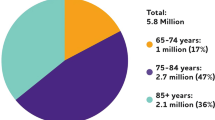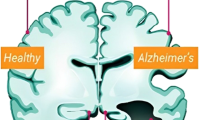Abstract
Schizophrenia (SZ) is a complex neuropsychiatric disorder that seriously affects the daily life of patients. Therefore, accurate diagnosis of SZ is essential for patient care. Several T1-weighted magnetic resonance imaging (MRI) and diffusion tensor imaging (DTI) markers (e.g., cortical thickness (CT), mean diffusivity (MD)) for SZ have been identified by using some existing brain atlases, and have been used successfully to discriminate patients with SZ from healthy controls (HCs). Currently, these markers have mainly been used separately. Thus, the full potential of T1-weighted MRI images and DTI images for SZ diagnosis might not yet have been used comprehensively. Furthermore, the extraction of these markers based on single brain atlas might not yet be able to use the full potential of these images. Therefore, in this study, we propose a multi-modality multi-atlas feature representation and a multi-kernel learning method (MMM) to perform SZ/HC classification. Firstly, we extract 8 feature sets from T1-weighted MRI images and DTI images via 4 existing brain atlases and 4 markers. Then, a two-step feature selection method is proposed to select the most discriminative features of each feature set for SZ/HC classification. Finally, a multiple feature sets based multi-kernel SVM learning method (MFMK-SVM) is proposed to combine all feature sets for SZ/HC classification. Experimental results show that our proposed method achieves an accuracy of 91.28%, a sensitivity of 90.85%, a specificity of 92.17% and an AUC of 0.9485 for SZ/HC classification. Experimental results illustrate that our proposed classification method is efficient and promising for clinical diagnosis of SZ.



Similar content being viewed by others
References
Alchatzidis S, Sotiras A, Zacharaki EI, Paragios N (2017) A discrete mrf framework for integrated multi-atlas registration and segmentation. Int J Comput Vis 121(1):169–181
Andersson JL, Sotiropoulos SN (2016) An integrated approach to correction for off-resonance effects and subject movement in diffusion mr imaging. Neuroimage 125:1063–1078
Brown G, Pocock A, Zhao MJ, Luján M (2012) Conditional likelihood maximisation: a unifying framework for information theoretic feature selection. J Mach Learn Res 13(Jan):27–66
Carli AC, Figueiredo MA, Bicego M, Murino V (2014) Generative embeddings based on rician mixtures for kernel-based classification of magnetic resonance images. Neurocomputing 123:49–59
Castellani U, Rossato E, Murino V, Bellani M, Rambaldelli G, Perlini C, Tomelleri L, Tansella M, Brambilla P (2012) Classification of schizophrenia using feature-based morphometry. J Neural Transm 119(3):395–404
Chang CC, Lin CJ (2011) Libsvm: a library for support vector machines. ACM Trans Intell Syst Technol (TIST) 2(3):27
Cortes C, Vapnik V (1995) Support-vector networks. Mach Learn 20(3):273–297
Cui Z, Zhong S, Xu P, He Y, Gong G (2013) PANDA: a pipeline toolbox for analyzing brain diffusion images. Front Hum Neurosci 7:42
Desikan RS, Ségonne F, Fischl B, Quinn BT, Dickerson BC, Blacker D, Buckner RL, Dale AM, Maguire RP, Hyman BT et al (2006) An automated labeling system for subdividing the human cerebral cortex on mri scans into gyral based regions of interest. Neuroimage 31(3):968–980
Destrieux C, Fischl B, Dale A, Halgren E (2010) Automatic parcellation of human cortical gyri and sulci using standard anatomical nomenclature. Neuroimage 53(1):1–15
Fawcett T (2006) An introduction to roc analysis. Pattern Recogn Lett 27(8):861–874
Guo S, Palaniyappan L, Liddle PF, Feng J (2016) Dynamic cerebral reorganization in the pathophysiology of schizophrenia: a mri-derived cortical thickness study. Psychol Med 46(10):2201–2214
Guyon I, Elisseeff A (2003) An introduction to variable and feature selection. J Mach Learn Res 3:1157–1182
Guyon I, Weston J, Barnhill S, Vapnik V (2002) Gene selection for cancer classification using support vector machines. Mach Learn 46(1):389–422
Hertz T, Hillel AB, Weinshall D (2006) Learning a kernel function for classification with small training samples. In: Proceedings of the 23rd international conference on machine learning. ACM, pp 401–408
Hsu CW, Chang CC, Lin CJ (2003) A practical guide to support vector classification. Technical report, Department of Computer Science, National Taiwan University
Hu R, Zhu X, Cheng D, He W, Yan Y, Song J, Zhang S (2017) Graph self-representation method for unsupervised feature selection. Neurocomputing 220:130–137
Hua K, Zhang J, Wakana S, Jiang H, Li X, Reich DS, Calabresi PA, Pekar JJ, van Zijl PC, Mori S (2008) Tract probability maps in stereotaxic spaces: analyses of white matter anatomy and tract-specific quantification. Neuroimage 39(1):336–347
Iglesias JE, Sabuncu MR (2015) Multi-atlas segmentation of biomedical images: a survey. Med Image Anal 24(1):205–219
Janousova E, Schwarz D, Kasparek T (2015) Combining various types of classifiers and features extracted from magnetic resonance imaging data in schizophrenia recognition. Psychiatry Res Neuroimaging 232(3):237–249
Jørgensen K, Nerland S, Norbom L, Doan N, Nesvåg R, Mørch-Johnsen L, Haukvik U, Melle I, Andreassen O, Westlye L et al (2016) Increased mri-based cortical grey/white-matter contrast in sensory and motor regions in schizophrenia and bipolar disorder. Psychol Med 46(9):1971–1985
Koikkalainen J, Lötjönen J, Thurfjell L, Rueckert D, Waldemar G, Soininen H, Initiative ADN et al. (2011) Multi-template tensor-based morphometry: application to analysis of alzheimer’s disease. NeuroImage 56(3):1134–1144
Lan W, Li M, Zhao K, Liu J, Wu FX, Pan Y, Wang J (2016) Ldap: a web server for lncrna-disease association prediction. Bioinformatics 33(3):458–460
Lan W, Wang J, Li M, Liu J, Li Y, Wu FX, Pan Y (2016) Predicting drug–target interaction using positive-unlabeled learning. Neurocomputing 206:50–57
Lan W, Wang J, Li M, Liu J, Wu F, Pan Y (2016) Predicting microrna-disease associations based on improved microrna and disease similarities. IEEE/ACM Trans Comput Biol Bioinform. https://doi.org/10.1109/TCBB.2016.2586190
Lee SH, Kubicki M, Asami T, Seidman LJ, Goldstein JM, Mesholam-Gately RI, McCarley RW, Shenton ME (2013) Extensive white matter abnormalities in patients with first-episode schizophrenia: a diffusion tensor imaging (dti) study. Schizophr Res 143(2):231–238
Liu J, Li M, Wang J, Wu F, Liu T, Pan Y (2014) A survey of mri-based brain tumor segmentation methods. Tsinghua Sci Technol 19(6):578–595
Liu J, Li M, Lan W, Wu F, Pan Y, Wang J (2016) Classification of alzheimer’s disease using whole brain hierarchical network. IEEE/ACM Trans Comput Biol Bioinform. https://doi.org/10.1109/TCBB.2016.2635144
Liu J, Li M, Pan Y, Lan W, Zheng R, Wu FX, Wang J (2017) Complex brain network analysis and its applications to brain disorders: a survey. Complexity 2017:8362741
Liu J, Li M, Pan Y, Wu FX, Chen X, Wang J (2017) Classification of schizophrenia based on individual hierarchical brain networks constructed from structural mri images. IEEE Trans NanoBiosci 16(7):600–608
Liu J, Pan Y, Li M, Chen Z, Tang L, Lu C, Wang J (2017) Applications of deep learning to mri images: a survey. Big Data Mining and Analytics PP(99):1–1
Liu J, Wang J, Bin H, Wu FX, Pan Y (2017) Alzheimer’s disease classification based on individual hierarchical networks constructed with 3d texture features. IEEE Trans NanoBiosci 16(6):428–437
Liu J, Wang J, Tang Z, Hu B, Wu F, Pan Y (2017) Improving alzheimeres disease classification by combining multiple measures. IEEE/ACM Trans Comput Biol Bioinform. https://doi.org/10.1109/TCBB.2017.2731849
Lu X, Yang Y, Wu F, Gao M, Xu Y, Zhang Y, Yao Y, Du X, Li C, Wu L et al (2016) Discriminative analysis of schizophrenia using support vector machine and recursive feature elimination on structural mri images. Medicine 95(30):e3973
Min R, Wu G, Cheng J, Wang Q, Shen D (2014) Multi-atlas based representations for alzheimer’s disease diagnosis. Hum Brain Mapp 35(10):5052–5070
Mori S, Wakana S, Van Zijl PC, Nagae-Poetscher L (2005) MRI Atlas of human white matter. Elsevier, Amsterdam
Nazeri A, Chakravarty MM, Felsky D, Lobaugh NJ, Rajji TK, Mulsant BH, Voineskos AN (2013) Alterations of superficial white matter in schizophrenia and relationship to cognitive performance. Neuropsychopharmacology 38(10):1954–1962
Palaniyappan L, Liddle PF (2012) Aberrant cortical gyrification in schizophrenia: a surface-based morphometry study. J Psychiatry Neurosci: JPN 37(6):399
Peng H, Long F, Ding C (2005) Feature selection based on mutual information criteria of max-dependency, max-relevance, and min-redundancy. IEEE Trans Pattern Anal Mach Intell 27(8):1226–1238
Reuter M, Rosas HD, Fischl B (2010) Highly accurate inverse consistent registration: a robust approach. Neuroimage 53(4):1181–1196
Roffo G, Melzi S (2017) Ranking to learn: feature ranking and selection via eigenvector centrality. Springer International Publishing, Cham, pp 19–35. https://doi.org/10.1007/978-3-319-61461-8_2
Roffo G, Melzi S, Cristani M (2015) Infinite feature selection. In: 2015 IEEE International conference on computer vision (ICCV), pp 4202–4210. https://doi.org/10.1109/ICCV.2015.478
Ségonne F, Dale AM, Busa E, Glessner M, Salat D, Hahn HK, Fischl B (2004) A hybrid approach to the skull stripping problem in mri. Neuroimage 22(3):1060–1075
Sled JG, Zijdenbos AP, Evans AC (1998) A nonparametric method for automatic correction of intensity nonuniformity in mri data. IEEE Trans Med Imaging 17(1):87–97
Tschacher W, Giersch A, Friston K (2017) Embodiment and schizophrenia: a review of implications and applications. Schizophr Bull 43(4):745–753
Tzourio-Mazoyer N, Landeau B, Papathanassiou D, Crivello F, Etard O, Delcroix N, Mazoyer B, Joliot M (2002) Automated anatomical labeling of activations in spm using a macroscopic anatomical parcellation of the mni mri single-subject brain. Neuroimage 15(1):273–289
Vita A, De Peri L, Deste G, Barlati S, Sacchetti E (2015) The effect of antipsychotic treatment on cortical gray matter changes in schizophrenia: does the class matter? a meta-analysis and meta-regression of longitudinal magnetic resonance imaging studies. Biol Psychiatry 78(6):403–412
Wakana S, Caprihan A, Panzenboeck MM, Fallon JH, Perry M, Gollub RL, Hua K, Zhang J, Jiang H, Dubey P et al (2007) Reproducibility of quantitative tractography methods applied to cerebral white matter. Neuroimage 36(3):630–644
Zhang S, Li X, Zong M, Zhu X, Cheng D (2017) Learning k for knn classification. ACM Trans Intell Syst Technol 8(3):43
Zhu X, Li X, Zhang S, Ju C, Wu X (2017) Robust joint graph sparse coding for unsupervised spectral feature selection. IEEE Transactions on Neural Networks and Learning Systems 28(6):1263–1275
Zhu X, Suk HI, Wang L, Lee SW, Shen D, Initiative ADN et al. (2017) A novel relational regularization feature selection method for joint regression and classification in ad diagnosis. Med Image Anal 38:205–214
Acknowledgements
The authors would like to express their gratitude for the support from the National Natural Science Foundation of China under Grant No.61232001, No.61420106009, No.61622213 and No.81371474.
Author information
Authors and Affiliations
Corresponding authors
Rights and permissions
About this article
Cite this article
Liu, J., Wang, X., Zhang, X. et al. MMM: classification of schizophrenia using multi-modality multi-atlas feature representation and multi-kernel learning. Multimed Tools Appl 77, 29651–29667 (2018). https://doi.org/10.1007/s11042-017-5470-7
Received:
Revised:
Accepted:
Published:
Issue Date:
DOI: https://doi.org/10.1007/s11042-017-5470-7




